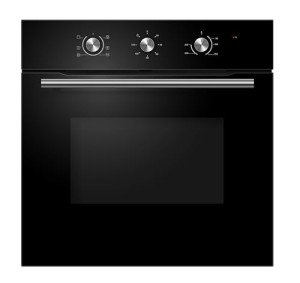The Modern Kitchen: A Guide to Built-In Ovens and Hobs
In today's hectic world, where cooking has actually become a creative outlet and an important part of life, having the best kitchen appliances is vital. Amongst these, built-in ovens and hobs stand apart as favorites in contemporary kitchens. This post aims to explore these appliances in depth, discussing their benefits, types, setup alternatives, and important tips for picking the very best designs for your kitchen.
Understanding Built-In Ovens and Hobs
What are Built-In Ovens?
A built-in oven is a device that is created to fit flawlessly into kitchen cabinetry, offering a tidy aesthetic in the kitchen. They vary from freestanding ovens and are known for their flexibility, available in numerous sizes and performances. Built-in ovens can be electric, gas, or perhaps steam ovens, making them ideal for different cooking styles.
What are Hobs?
Hobs, likewise referred to as cooktops, are the flat cooking surfaces generally found on the counter top. Like ovens, hobs come in lots of kinds, including gas, electric, induction, and even integrated designs. Their compact nature permits flexibility in kitchen layouts and designs.
Table 1: Comparison of Built-In Ovens and Hobs
| Feature | Built-In Oven | Hob |
|---|---|---|
| Installation Type | Integrated into kitchen cabinets | Installed on counter top |
| Cooking Methods | Baking, roasting, steaming | Boiling, frying, sautéing |
| Types | Single, double, combination | Gas, electric, induction |
| Visual appeals | Modern, sleek styles | Numerous surfaces available |
| Control | Digital programs, handbook | Knob or touch control |
| Cost Range | Mid to high-range | Wide, depending upon type |
Advantages of Built-In Ovens and Hobs
Aesthetic Appeal
Built-in ovens and hobs contribute substantially to a streamlined appearance in modern-day kitchens. Their integration into cabinets permits a clean and professional finish that complements any kitchen style.
Space-Saving Design
Among the pivotal advantages of built-in ovens and hobs is their space-saving design. As they are fitted straight into cabinetry, they maximize important counter space, making the kitchen feel bigger and more organized.
Flexibility in Cooking Methods
Built-in ovens included various cooking functions, such as convection, barbecuing, and self-cleaning alternatives. Likewise, hobs offer diverse cooking approaches, including fast boiling with induction technology or the standard flame of gas hobs. This adaptability allows home cooks to experiment with a wide range of culinary strategies.
Boosted Safety Features
Many contemporary built-in hobs and ovens included innovative safety functions, such as automatic shut-off, cool-touch doors, and kid locks. These features improve security, particularly in families with kids.
Picking the Right Built-In Oven and Hob
Choosing the right built-in oven and hob for your kitchen involves a number of factors to consider:
Factors to Consider
- Kitchen Layout: Understand the flow and style of your space to select appliances that fit your design.
- Cooking Habits: Are you a casual cook, or do you prepare complicated meals? Understanding your cooking needs will assist your selection.
- Budget: Building a budget plan will assist narrow down your choices without spending too much.
- Energies Available: Check if you have access to gas lines for a gas hob or if you choose electric choices.
- Energy Efficiency: Look for energy-efficient models that can minimize electrical power or gas expenses in time.
Kinds Of Built-In Ovens and Hobs
Built-In Ovens
- Single Ovens: Ideal for smaller kitchen areas or casual cooks.
- Double Ovens: Great for those who typically captivate or prepare multiple meals all at once.
- Combination Ovens: Feature both conventional and microwave performances.
Hobs
- Gas Hobs: Perfect for those who prefer the control of open flames.
- Electric Hobs: Common and easy to use, but might take longer to heat up.
- Induction Hobs: Quick heating and energy-efficient, however require compatible cookware.
FAQ Section
Q1: Are built-in ovens more pricey than freestanding ovens?A1: Generally, built-in ovens are more pricey due to their style and installation requirements. However, the rate can differ based upon features and brand names. Q2: Can I install a built-in oven myself?A2: While DIY
setup is possible, it is advised to hire a professional for gas and electrical connections to make sure safety and compliance with regional codes. Q3: What maintenance do built-in ovens and hobs require?A3: Regular cleaning is essential. Hobs may need occasionaldescaling, and ovens can gain from self-cleaning functions if
available. Q4: How do I choose in between gas and electric hobs?A4: Consider your cooking choices, available utility connections, and security features.
If you value accurate temperature level control, gas might be the
best option. For fast heating, electric or induction could be much better. Q5: What are the energy performance rankings of built-in ovens and hobs?A5: Most contemporary built-in ovens and hobs come with energy rankings, comparable to other appliances.
Look for those with high rankings to minimize energy bills. In summary, built-in ovens and hobs are necessary elements of a trendy and practical modern kitchen. Their range, safety features, and visual appeal make them an attractive choice for homeowners and aspiring chefs alike. By carefully considering your cooking routines, kitchen design, and style choices, you can pick the right built-in appliances that improve your cooking experience and change your kitchen into a cooking haven. built in ovens and hobs in these appliances not just includes value to your home however also elevates your cooking to brand-new heights.

